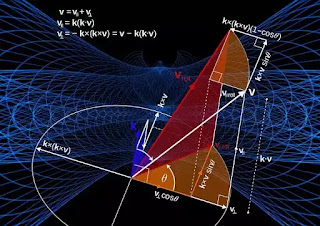Backward Euler Method
Backward Euler Method:
In numerical analysis and scientific computing , the backward Euler method(implicit Euler method) is one of the most basic numerical methods for ordinary differential equations . It is similar to the standard Euler method , but differs in that it is an implicit method .
Description:
Consider the ordinary differential equation
dy/dx = f(t,y)
with initial value y(t₀) = y₀ . Here the function f and the initial data t₀ and y₀ are known ; the function y depends on the real variable t and is unknown . A numerical method produces a sequence y₀,y₁,y₂,.... such that yₖ approximates y(t₀+kh) , where h is called step size .
The backward Euler method computes the approximations using
yₖ₊₁ = yₖ +hf ( tₖ₊₁,yₖ₊₁)
This differs from the Forward Euler method in that the latter uses f(tₖ,yₖ) in place of
f(tₖ₊₁ , yₖ₊₁) .
The backward Euler method is an implicit method , the new approximation yₖ₊₁ . Sometimes this can be done by fixed point iteration .
y⁽⁰⁾ₖ₊₁ = yₖ , y⁽ⁱ⁺¹⁾ₖ₊₁ = yₖ+hf(tₖ₊₁,y⁽ⁱ⁾ₖ₊₁)
If this sequence converges (within a given tolerance) then the method takes its limit as the new approximation yₖ₊₁ .
Alternatively , one can use some modification of the Newton_ Raphson method to solve the algebric equation .
Derivation :
Integrating the differential equation
dy/dx = f(t,y) from tₖ to tₖ₊₁ = tₖ+h yeilds
tₖ₊₁
y(tₖ₊₁) - y(tₖ) = ∫ f(t,y(t)) dt
tₖ
Now approximate the integral on the right by the right hand ractangle method (with one ractangle) :
y(tₖ₊₁) - y(tₖ) ≈ hf( tₖ₊₁, y(tₖ₊₁))
Finally use that yₖ is supposed to approximate y(tₖ) and the formula for the backward Euler method follows .












Comments
Post a Comment
If Any Doubt Ask Me